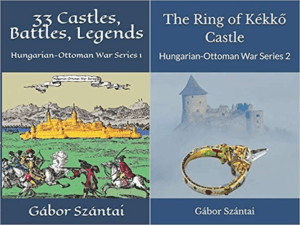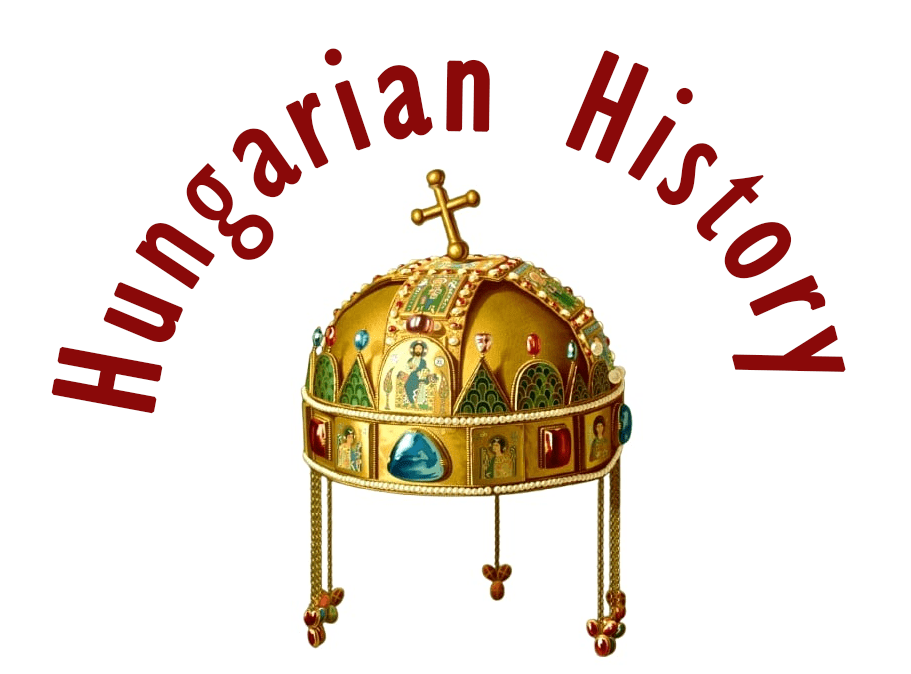The QR Code Project: Adopt a Castle
There are thousands of castles in Europe, they are beautiful and imposing structures, and a lifetime would not be enough to visit them. Castles belonged to kings and nobles, they were the centers of power in the Middle Ages. But as far as the survival of Western European civilization is concerned, no one can claim that they played a crucial role. (With the possible exception of Spain, if we are talking about repelling Arab conquest).
What makes the castles built in the Kingdom of Hungary unique?
The Kingdom of Hungary lies on the far western edge of the Great Eurasian Steppe. Fortunately, the Hungarians decided to embrace Christianity, and their combination of Western and Eastern warfare proved effective enough to repel the constant invasions of Eastern nomads since the 11th century. Think, for example, of the battles of King Saint László (1040-1095).

Unfortunately, the Mongol invasion in 1241-1242 was too much. The king barely escaped, and only the stone castles withstood the Mongol onslaught. King Béla IV seemed to have learned his lesson, and during his reign a fervent castle-building took place. By 1270 there were more than 100 stone castles in the kingdom. No wonder the Hungarians were able to beat back the second and third waves of the Mongols. Europe was safe again.

The next threat that came in the 15th century was the Turks. The goal of the Ottoman Empire was to conquer Western Europe, and they seemed invincible. However, the Kingdom of Hungary was able to block their westward expansion with the castles built by King Zsigmond and King Matthias Corvinus. The southern Borderland did not collapse until 1526.

After 1541, a new frontier had to be built. This was an even longer line with more castles and fortifications, and we are talking about a multiple chain of defense. It proved effective enough to stop the Ottomans. Europe was safe again. Here is an article with more details about the 1,000-mile Hungarian Borderland:
https://www.hungarianottomanwars.com/essays/the-borderland/

Let us not forget the deeds of the defenders, regardless of their ethnic origin. Also, the famous Hussar cavalry units were developed in the Borderland because of the need for special and flexible warfare against the overpowering enemy. As the old saying goes, “A castle can only be defended in the field”. You can read many stories about their heroic battles on my site.

Many of the castles were demolished and only a few ruins remain. Especially in the land of today’s Hungary. Yet Europe would be a very different place without them. We must remember the people who fought and died in them, whether we know their names or not. The history of the fortresses of the Hungarian Borderland should be considered on the proper pages of the general European history. And its importance was no less than the danger that threatened Western Europe.

Fortified churches in Transylvania
The ethnic losses of the Hungarians and German Saxons would have been even greater if they had not been able to find shelter in the Saxon and Hungarian Székely fortified churches against the southern and eastern raiding parties. The Crimean Tartars, the Cossacks, the Moldavians, the Wallachians, and the Ottoman Turks often attacked in this area, not to mention the Western mercenaries who also liked to plunder. You can read more about these fortifications on my page:
https://www.hungarianottomanwars.com/transylvania/fortified-churches-in-transylvania/

Photo: Civertan
Most of the surviving Gothic and Renaissance heritage is not in modern-day Hungary

During the partition of the Hungarian Kingdom after 1541, about 70% of the country was lost to the Turks. If you take a look at the map below, which shows you the surviving Renaissance buildings of the Kingdom of Hungary, you will see that they are mostly outside the modern borders of Hungary, which were drawn in 1918, then again 72% of the country was lost:

These places, which the Ottoman Turks could not reach, remained intact and one can admire many examples of Hungarian Gothic and Renaissance architecture. However, they are mostly located in Slovakia, Ukraine and Romania. Unfortunately, the use of the adjective “Hungarian Renaissance” has not been welcomed in these countries during the last 100 years. Other labels or none at all have been used. However, the 21st century could bring positive changes if ethnic diversity could be more tolerated.

These castles virtually do not exist unless their stories are translated into English and shared on social media. In other words, we can only raise awareness about the unique European role of Hungarian history if we can bring these castles to life by highlighting their role in defending Western Europe against all those invading threats between the 11th century and 1699. To achieve this goal, I would like to ask for your kind help in adopting a Hungarian castle by supporting my work or joining the QR Code Project.
The QR Code Project



If you print the QR code on a waterproof material and place it on the information board in the respective castle, it will be a temporary but very friendly solution to provide Hungarian information to all Hungarian visitors. In addition, you can print another QR code that would also lead people to the English description of the castle. If you are planning a trip to one of these castles around Hungary, you might as well lend a hand and print such a code. Creating a code is free and easy. Just copy the Hungarian (or English) website of the castle here:
https://me-qr.com/qr-code-generator/qr

You can find a long list of Hungarian castles on http://www.varlexikon.hu or in English, right on my page: https://www.hungarianottomanwars.com/

You can adopt a castle by either generating a QR code or by supporting my page:
Follow me on Patreon: Become a Patron! or buy me a coffee here:
So far I have translated the history of 352 castles into English, and you can find them on Google My Maps as well. Now, it is the largest online collection of Hungarian castles in English. However, my goal is to describe all of them and bring them to new life.
Please, check out my books on Amazon or Draft2Digital, they are available in hardcover, paperback, or ebook:
https://www.amazon.com/dp/198020490X or at https://books2read.com/b/boYd81



